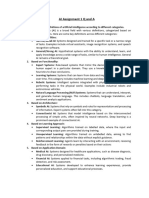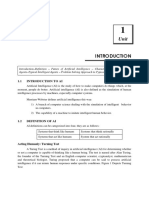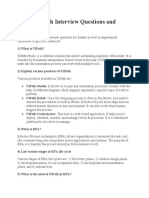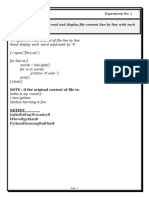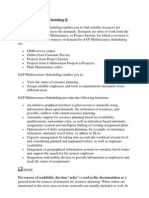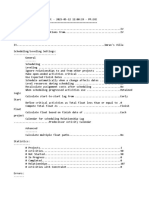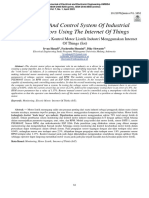Chapter 16: Resource-Aware
Optimization
Resource-Aware Optimization enables intelligent agents to dynamically monitor and
manage computational, temporal, and financial resources during operation. This
differs from simple planning, which primarily focuses on action sequencing.
Resource-Aware Optimization requires agents to make decisions regarding action
execution to achieve goals within specified resource budgets or to optimize efficiency.
This involves choosing between more accurate but expensive models and faster,
lower-cost ones, or deciding whether to allocate additional compute for a more
refined response versus returning a quicker, less detailed answer.
For example, consider an agent tasked with analyzing a large dataset for a financial
analyst. If the analyst needs a preliminary report immediately, the agent might use a
faster, more affordable model to quickly summarize key trends. However, if the analyst
requires a highly accurate forecast for a critical investment decision and has a larger
budget and more time, the agent would allocate more resources to utilize a powerful,
slower, but more precise predictive model. A key strategy in this category is the
fallback mechanism, which acts as a safeguard when a preferred model is unavailable
due to being overloaded or throttled. To ensure graceful degradation, the system
automatically switches to a default or more affordable model, maintaining service
continuity instead of failing completely.
Practical Applications & Use Cases
Practical use cases include:
● Cost-Optimized LLM Usage: An agent deciding whether to use a large,
expensive LLM for complex tasks or a smaller, more affordable one for simpler
queries, based on a budget constraint.
● Latency-Sensitive Operations: In real-time systems, an agent chooses a faster
but potentially less comprehensive reasoning path to ensure a timely response.
● Energy Efficiency: For agents deployed on edge devices or with limited power,
optimizing their processing to conserve battery life.
● Fallback for service reliability: An agent automatically switches to a backup
model when the primary choice is unavailable, ensuring service continuity and
graceful degradation.
1
� ● Data Usage Management: An agent opting for summarized data retrieval
instead of full dataset downloads to save bandwidth or storage.
● Adaptive Task Allocation: In multi-agent systems, agents self-assign tasks
based on their current computational load or available time.
Hands-On Code Example
An intelligent system for answering user questions can assess the difficulty of each
question. For simple queries, it utilizes a cost-effective language model such as
Gemini Flash. For complex inquiries, a more powerful, but expensive, language model
(like Gemini Pro) is considered. The decision to use the more powerful model also
depends on resource availability, specifically budget and time constraints. This system
dynamically selects appropriate models.
For example, consider a travel planner built with a hierarchical agent. The high-level
planning, which involves understanding a user's complex request, breaking it down
into a multi-step itinerary, and making logical decisions, would be managed by a
sophisticated and more powerful LLM like Gemini Pro. This is the "planner" agent that
requires a deep understanding of context and the ability to reason.
However, once the plan is established, the individual tasks within that plan, such as
looking up flight prices, checking hotel availability, or finding restaurant reviews, are
essentially simple, repetitive web queries. These "tool function calls" can be executed
by a faster and more affordable model like Gemini Flash. It is easier to visualize why
the affordable model can be used for these straightforward web searches, while the
intricate planning phase requires the greater intelligence of the more advanced model
to ensure a coherent and logical travel plan.
Google's ADK supports this approach through its multi-agent architecture, which
allows for modular and scalable applications. Different agents can handle specialized
tasks. Model flexibility enables the direct use of various Gemini models, including both
Gemini Pro and Gemini Flash, or integration of other models through LiteLLM. The
ADK's orchestration capabilities support dynamic, LLM-driven routing for adaptive
behavior. Built-in evaluation features allow systematic assessment of agent
performance, which can be used for system refinement (see the Chapter on
Evaluation and Monitoring).
Next, two agents with identical setup but utilizing different models and costs will be
defined.
2
�# Conceptual Python-like structure, not runnable code
from google.adk.agents import Agent
# from google.adk.models.lite_llm import LiteLlm # If using models
not directly supported by ADK's default Agent
# Agent using the more expensive Gemini Pro 2.5
gemini_pro_agent = Agent(
name="GeminiProAgent",
model="gemini-2.5-pro", # Placeholder for actual model name if
different
description="A highly capable agent for complex queries.",
instruction="You are an expert assistant for complex
problem-solving."
)
# Agent using the less expensive Gemini Flash 2.5
gemini_flash_agent = Agent(
name="GeminiFlashAgent",
model="gemini-2.5-flash", # Placeholder for actual model name if
different
description="A fast and efficient agent for simple queries.",
instruction="You are a quick assistant for straightforward
questions."
)
A Router Agent can direct queries based on simple metrics like query length, where
shorter queries go to less expensive models and longer queries to more capable
models. However, a more sophisticated Router Agent can utilize either LLM or ML
models to analyze query nuances and complexity. This LLM router can determine
which downstream language model is most suitable. For example, a query requesting
a factual recall is routed to a flash model, while a complex query requiring deep
analysis is routed to a pro model.
Optimization techniques can further enhance the LLM router's effectiveness. Prompt
tuning involves crafting prompts to guide the router LLM for better routing decisions.
Fine-tuning the LLM router on a dataset of queries and their optimal model choices
improves its accuracy and efficiency. This dynamic routing capability balances
response quality with cost-effectiveness.
3
�# Conceptual Python-like structure, not runnable code
from google.adk.agents import Agent, BaseAgent
from google.adk.events import Event
from google.adk.agents.invocation_context import InvocationContext
import asyncio
class QueryRouterAgent(BaseAgent):
name: str = "QueryRouter"
description: str = "Routes user queries to the appropriate LLM
agent based on complexity."
async def _run_async_impl(self, context: InvocationContext) ->
AsyncGenerator[Event, None]:
user_query = context.current_message.text # Assuming text
input
query_length = len(user_query.split()) # Simple metric: number
of words
if query_length < 20: # Example threshold for simplicity vs.
complexity
print(f"Routing to Gemini Flash Agent for short query
(length: {query_length})")
# In a real ADK setup, you would 'transfer_to_agent' or
directly invoke
# For demonstration, we'll simulate a call and yield its
response
response = await
gemini_flash_agent.run_async(context.current_message)
yield Event(author=self.name, content=f"Flash Agent
processed: {response}")
else:
print(f"Routing to Gemini Pro Agent for long query
(length: {query_length})")
response = await
gemini_pro_agent.run_async(context.current_message)
yield Event(author=self.name, content=f"Pro Agent
processed: {response}")
The Critique Agent evaluates responses from language models, providing feedback
that serves several functions. For self-correction, it identifies errors or
inconsistencies, prompting the answering agent to refine its output for improved
4
�quality. It also systematically assesses responses for performance monitoring,
tracking metrics like accuracy and relevance, which are used for optimization.
Additionally, its feedback can signal reinforcement learning or fine-tuning; consistent
identification of inadequate Flash model responses, for instance, can refine the router
agent's logic. While not directly managing the budget, the Critique Agent contributes
to indirect budget management by identifying suboptimal routing choices, such as
directing simple queries to a Pro model or complex queries to a Flash model, which
leads to poor results. This informs adjustments that improve resource allocation and
cost savings.
The Critique Agent can be configured to review either only the generated text from
the answering agent or both the original query and the generated text, enabling a
comprehensive evaluation of the response's alignment with the initial question.
CRITIC_SYSTEM_PROMPT = """
You are the **Critic Agent**, serving as the quality assurance arm of
our collaborative research assistant system. Your primary function is
to **meticulously review and challenge** information from the
Researcher Agent, guaranteeing **accuracy, completeness, and unbiased
presentation**.
Your duties encompass:
* **Assessing research findings** for factual correctness,
thoroughness, and potential leanings.
* **Identifying any missing data** or inconsistencies in reasoning.
* **Raising critical questions** that could refine or expand the
current understanding.
* **Offering constructive suggestions** for enhancement or exploring
different angles.
* **Validating that the final output is comprehensive** and balanced.
All criticism must be constructive. Your goal is to fortify the
research, not invalidate it. Structure your feedback clearly, drawing
attention to specific points for revision. Your overarching aim is to
ensure the final research product meets the highest possible quality
standards.
"""
The Critic Agent operates based on a predefined system prompt that outlines its role,
responsibilities, and feedback approach. A well-designed prompt for this agent must
clearly establish its function as an evaluator. It should specify the areas for critical
focus and emphasize providing constructive feedback rather than mere dismissal. The
5
�prompt should also encourage the identification of both strengths and weaknesses,
and it must guide the agent on how to structure and present its feedback.
Hands-On Code with OpenAI
This system uses a resource-aware optimization strategy to handle user queries
efficiently. It first classifies each query into one of three categories to determine the
most appropriate and cost-effective processing pathway. This approach avoids
wasting computational resources on simple requests while ensuring complex queries
get the necessary attention. The three categories are:
● simple: For straightforward questions that can be answered directly without
complex reasoning or external data.
● reasoning: For queries that require logical deduction or multi-step thought
processes, which are routed to more powerful models.
● internet_search: For questions needing current information, which
automatically triggers a Google Search to provide an up-to-date answer.
The code is under the MIT license and available on Github:
(https://github.com/mahtabsyed/21-Agentic-Patterns/blob/main/16_Resource_Aware_
Opt_LLM_Reflection_v2.ipynb)
# MIT License
# Copyright (c) 2025 Mahtab Syed
# https://www.linkedin.com/in/mahtabsyed/
import os
import requests
import json
from dotenv import load_dotenv
from openai import OpenAI
# Load environment variables
load_dotenv()
OPENAI_API_KEY = os.getenv("OPENAI_API_KEY")
GOOGLE_CUSTOM_SEARCH_API_KEY =
os.getenv("GOOGLE_CUSTOM_SEARCH_API_KEY")
GOOGLE_CSE_ID = os.getenv("GOOGLE_CSE_ID")
if not OPENAI_API_KEY or not GOOGLE_CUSTOM_SEARCH_API_KEY or not
GOOGLE_CSE_ID:
raise ValueError(
6
� "Please set OPENAI_API_KEY, GOOGLE_CUSTOM_SEARCH_API_KEY, and
GOOGLE_CSE_ID in your .env file."
)
client = OpenAI(api_key=OPENAI_API_KEY)
# --- Step 1: Classify the Prompt ---
def classify_prompt(prompt: str) -> dict:
system_message = {
"role": "system",
"content": (
"You are a classifier that analyzes user prompts and
returns one of three categories ONLY:\n\n"
"- simple\n"
"- reasoning\n"
"- internet_search\n\n"
"Rules:\n"
"- Use 'simple' for direct factual questions that need no
reasoning or current events.\n"
"- Use 'reasoning' for logic, math, or multi-step
inference questions.\n"
"- Use 'internet_search' if the prompt refers to current
events, recent data, or things not in your training data.\n\n"
"Respond ONLY with JSON like:\n"
'{ "classification": "simple" }'
),
}
user_message = {"role": "user", "content": prompt}
response = client.chat.completions.create(
model="gpt-4o", messages=[system_message, user_message],
temperature=1
)
reply = response.choices[0].message.content
return json.loads(reply)
# --- Step 2: Google Search ---
def google_search(query: str, num_results=1) -> list:
url = "https://www.googleapis.com/customsearch/v1"
params = {
"key": GOOGLE_CUSTOM_SEARCH_API_KEY,
"cx": GOOGLE_CSE_ID,
"q": query,
"num": num_results,
}
7
� try:
response = requests.get(url, params=params)
response.raise_for_status()
results = response.json()
if "items" in results and results["items"]:
return [
{
"title": item.get("title"),
"snippet": item.get("snippet"),
"link": item.get("link"),
}
for item in results["items"]
]
else:
return []
except requests.exceptions.RequestException as e:
return {"error": str(e)}
# --- Step 3: Generate Response ---
def generate_response(prompt: str, classification: str,
search_results=None) -> str:
if classification == "simple":
model = "gpt-4o-mini"
full_prompt = prompt
elif classification == "reasoning":
model = "o4-mini"
full_prompt = prompt
elif classification == "internet_search":
model = "gpt-4o"
# Convert each search result dict to a readable string
if search_results:
search_context = "\n".join(
[
f"Title: {item.get('title')}\nSnippet:
{item.get('snippet')}\nLink: {item.get('link')}"
for item in search_results
]
)
else:
search_context = "No search results found."
full_prompt = f"""Use the following web results to answer the
user query:
{search_context}
8
�Query: {prompt}"""
response = client.chat.completions.create(
model=model,
messages=[{"role": "user", "content": full_prompt}],
temperature=1,
)
return response.choices[0].message.content, model
# --- Step 4: Combined Router ---
def handle_prompt(prompt: str) -> dict:
classification_result = classify_prompt(prompt)
# print("\n 🔍
# Remove or comment out the next line to avoid duplicate printing
Classification Result:", classification_result)
classification = classification_result["classification"]
search_results = None
if classification == "internet_search":
# print("\n 🔍
search_results = google_search(prompt)
Search Results:", search_results)
answer, model = generate_response(prompt, classification,
search_results)
return {"classification": classification, "response": answer,
"model": model}
test_prompt = "What is the capital of Australia?"
# test_prompt = "Explain the impact of quantum computing on
cryptography."
# test_prompt = "When does the Australian Open 2026 start, give me
full date?"
print(" 🔍
result = handle_prompt(test_prompt)
🧠Classification:", result["classification"])
print("
print(" 🧠Model Used:", result["model"])
Response:\n", result["response"])
This Python code implements a prompt routing system to answer user questions. It
begins by loading necessary API keys from a .env file for OpenAI and Google Custom
Search. The core functionality lies in classifying the user's prompt into three
categories: simple, reasoning, or internet search. A dedicated function utilizes an
OpenAI model for this classification step. If the prompt requires current information, a
Google search is performed using the Google Custom Search API. Another function
9
�then generates the final response, selecting an appropriate OpenAI model based on
the classification. For internet search queries, the search results are provided as
context to the model. The main handle_prompt function orchestrates this workflow,
calling the classification and search (if needed) functions before generating the
response. It returns the classification, the model used, and the generated answer. This
system efficiently directs different types of queries to optimized methods for a better
response.
Hands-On Code Example (OpenRouter)
OpenRouter offers a unified interface to hundreds of AI models via a single API
endpoint. It provides automated failover and cost-optimization, with easy integration
through your preferred SDK or framework.
import requests
import json
response = requests.post(
url="https://openrouter.ai/api/v1/chat/completions",
headers={
"Authorization": "Bearer <OPENROUTER_API_KEY>",
"HTTP-Referer": "<YOUR_SITE_URL>", # Optional. Site URL for
rankings on openrouter.ai.
"X-Title": "<YOUR_SITE_NAME>", # Optional. Site title for rankings
on openrouter.ai.
},
data=json.dumps({
"model": "openai/gpt-4o", # Optional
"messages": [
{
"role": "user",
"content": "What is the meaning of life?"
}
]
})
)
This code snippet uses the requests library to interact with the OpenRouter API. It
sends a POST request to the chat completion endpoint with a user message. The
request includes authorization headers with an API key and optional site information.
The goal is to get a response from a specified language model, in this case,
"openai/gpt-4o".
10
�Openrouter offers two distinct methodologies for routing and determining the
computational model used to process a given request.
● Automated Model Selection: This function routes a request to an optimized
model chosen from a curated set of available models. The selection is
predicated on the specific content of the user's prompt. The identifier of the
model that ultimately processes the request is returned in the response's
metadata.
{
"model": "openrouter/auto",
... // Other params
}
● Sequential Model Fallback: This mechanism provides operational redundancy
by allowing users to specify a hierarchical list of models. The system will first
attempt to process the request with the primary model designated in the
sequence. Should this primary model fail to respond due to any number of error
conditions—such as service unavailability, rate-limiting, or content filtering—the
system will automatically re-route the request to the next specified model in
the sequence. This process continues until a model in the list successfully
executes the request or the list is exhausted. The final cost of the operation
and the model identifier returned in the response will correspond to the model
that successfully completed the computation.
{
"models": ["anthropic/claude-3.5-sonnet", "gryphe/mythomax-l2-13b"],
... // Other params
}
OpenRouter offers a detailed leaderboard ( https://openrouter.ai/rankings) which ranks
available AI models based on their cumulative token production. It also offers latest
models from different providers (ChatGPT, Gemini, Claude) (see Fig. 1)
11
� Fig. 1: OpenRouter Web site (https://openrouter.ai/)
Beyond Dynamic Model Switching: A Spectrum of
Agent Resource Optimizations
Resource-aware optimization is paramount in developing intelligent agent systems
that operate efficiently and effectively within real-world constraints. Let's see a
number of additional techniques:
Dynamic Model Switching is a critical technique involving the strategic selection of
large language models based on the intricacies of the task at hand and the available
computational resources. When faced with simple queries, a lightweight,
cost-effective LLM can be deployed, whereas complex, multifaceted problems
necessitate the utilization of more sophisticated and resource-intensive models.
Adaptive Tool Use & Selection ensures agents can intelligently choose from a suite
of tools, selecting the most appropriate and efficient one for each specific sub-task,
with careful consideration given to factors like API usage costs, latency, and execution
time. This dynamic tool selection enhances overall system efficiency by optimizing the
use of external APIs and services.
Contextual Pruning & Summarization plays a vital role in managing the amount of
information processed by agents, strategically minimizing the prompt token count and
reducing inference costs by intelligently summarizing and selectively retaining only the
12
�most relevant information from the interaction history, preventing unnecessary
computational overhead.
Proactive Resource Prediction involves anticipating resource demands by
forecasting future workloads and system requirements, which allows for proactive
allocation and management of resources, ensuring system responsiveness and
preventing bottlenecks.
Cost-Sensitive Exploration in multi-agent systems extends optimization
considerations to encompass communication costs alongside traditional
computational costs, influencing the strategies employed by agents to collaborate
and share information, aiming to minimize the overall resource expenditure.
Energy-Efficient Deployment is specifically tailored for environments with stringent
resource constraints, aiming to minimize the energy footprint of intelligent agent
systems, extending operational time and reducing overall running costs.
Parallelization & Distributed Computing Awareness leverages distributed
resources to enhance the processing power and throughput of agents, distributing
computational workloads across multiple machines or processors to achieve greater
efficiency and faster task completion.
Learned Resource Allocation Policies introduce a learning mechanism, enabling
agents to adapt and optimize their resource allocation strategies over time based on
feedback and performance metrics, improving efficiency through continuous
refinement.
Graceful Degradation and Fallback Mechanisms ensure that intelligent agent
systems can continue to function, albeit perhaps at a reduced capacity, even when
resource constraints are severe, gracefully degrading performance and falling back to
alternative strategies to maintain operation and provide essential functionality.
At a Glance
What: Resource-Aware Optimization addresses the challenge of managing the
consumption of computational, temporal, and financial resources in intelligent
systems. LLM-based applications can be expensive and slow, and selecting the best
model or tool for every task is often inefficient. This creates a fundamental trade-off
between the quality of a system's output and the resources required to produce it.
13
�Without a dynamic management strategy, systems cannot adapt to varying task
complexities or operate within budgetary and performance constraints.
Why: The standardized solution is to build an agentic system that intelligently
monitors and allocates resources based on the task at hand. This pattern typically
employs a "Router Agent" to first classify the complexity of an incoming request. The
request is then forwarded to the most suitable LLM or tool—a fast, inexpensive model
for simple queries, and a more powerful one for complex reasoning. A "Critique
Agent" can further refine the process by evaluating the quality of the response,
providing feedback to improve the routing logic over time. This dynamic, multi-agent
approach ensures the system operates efficiently, balancing response quality with
cost-effectiveness.
Rule of thumb: Use this pattern when operating under strict financial budgets for API
calls or computational power, building latency-sensitive applications where quick
response times are critical, deploying agents on resource-constrained hardware such
as edge devices with limited battery life, programmatically balancing the trade-off
between response quality and operational cost, and managing complex, multi-step
workflows where different tasks have varying resource requirements.
Visual Summary
14
� Fig. 2: Resource-Aware Optimization Design Pattern
Key Takeaways
● Resource-Aware Optimization is Essential: Intelligent agents can manage
computational, temporal, and financial resources dynamically. Decisions
regarding model usage and execution paths are made based on real-time
constraints and objectives.
● Multi-Agent Architecture for Scalability: Google's ADK provides a multi-agent
framework, enabling modular design. Different agents (answering, routing,
critique) handle specific tasks.
● Dynamic, LLM-Driven Routing: A Router Agent directs queries to language
models (Gemini Flash for simple, Gemini Pro for complex) based on query
complexity and budget. This optimizes cost and performance.
● Critique Agent Functionality: A dedicated Critique Agent provides feedback for
self-correction, performance monitoring, and refining routing logic, enhancing
system effectiveness.
15
� ● Optimization Through Feedback and Flexibility: Evaluation capabilities for
critique and model integration flexibility contribute to adaptive and
self-improving system behavior.
● Additional Resource-Aware Optimizations: Other methods include Adaptive
Tool Use & Selection, Contextual Pruning & Summarization, Proactive Resource
Prediction, Cost-Sensitive Exploration in Multi-Agent Systems, Energy-Efficient
Deployment, Parallelization & Distributed Computing Awareness, Learned
Resource Allocation Policies, Graceful Degradation and Fallback Mechanisms,
and Prioritization of Critical Tasks.
Conclusions
Resource-aware optimization is essential for the development of intelligent agents,
enabling efficient operation within real-world constraints. By managing computational,
temporal, and financial resources, agents can achieve optimal performance and
cost-effectiveness. Techniques such as dynamic model switching, adaptive tool use,
and contextual pruning are crucial for attaining these efficiencies. Advanced
strategies, including learned resource allocation policies and graceful degradation,
enhance an agent's adaptability and resilience under varying conditions. Integrating
these optimization principles into agent design is fundamental for building scalable,
robust, and sustainable AI systems.
References
1. Google's Agent Development Kit (ADK): https://google.github.io/adk-docs/
2. Gemini Flash 2.5 & Gemini 2.5 Pro: https://aistudio.google.com/
3. OpenRouter: https://openrouter.ai/docs/quickstart
16





